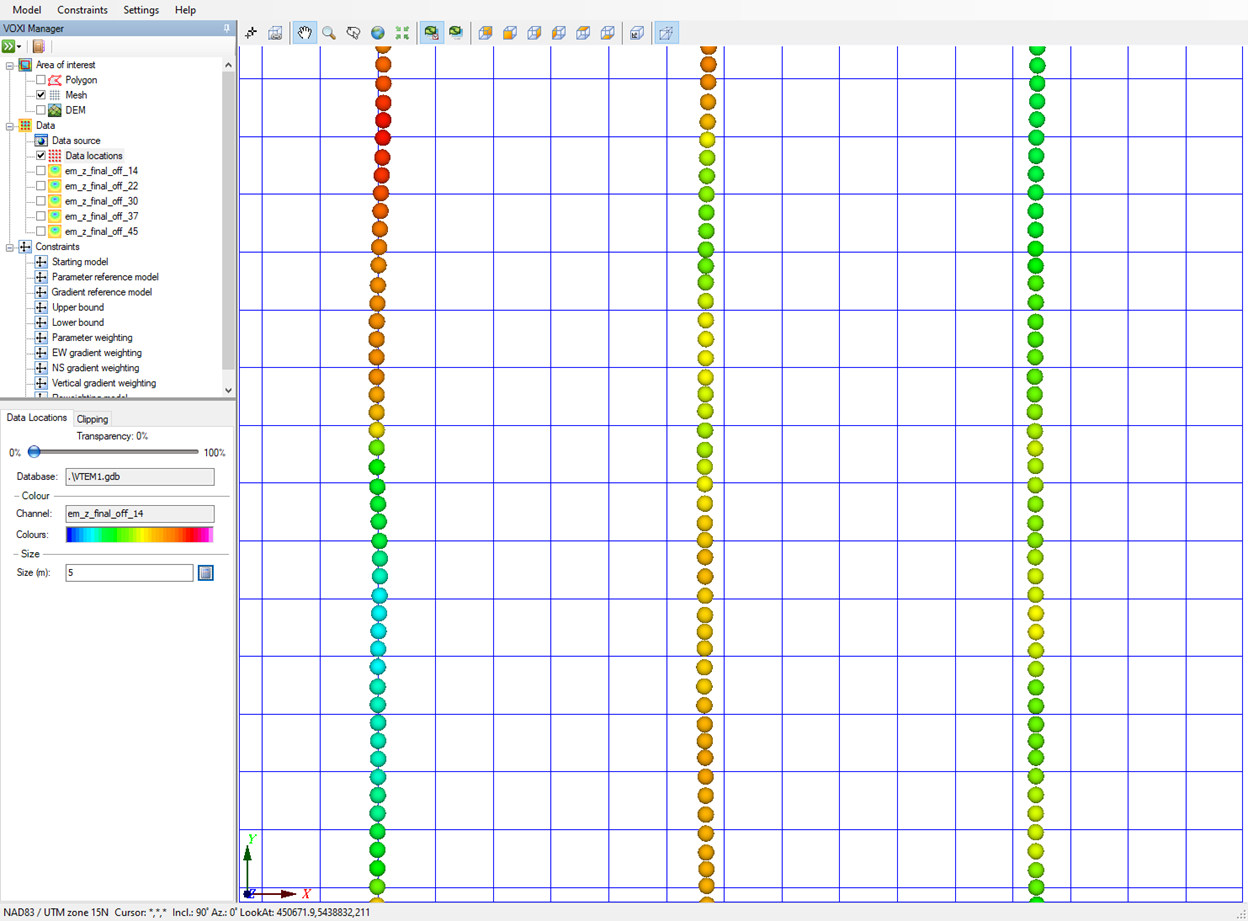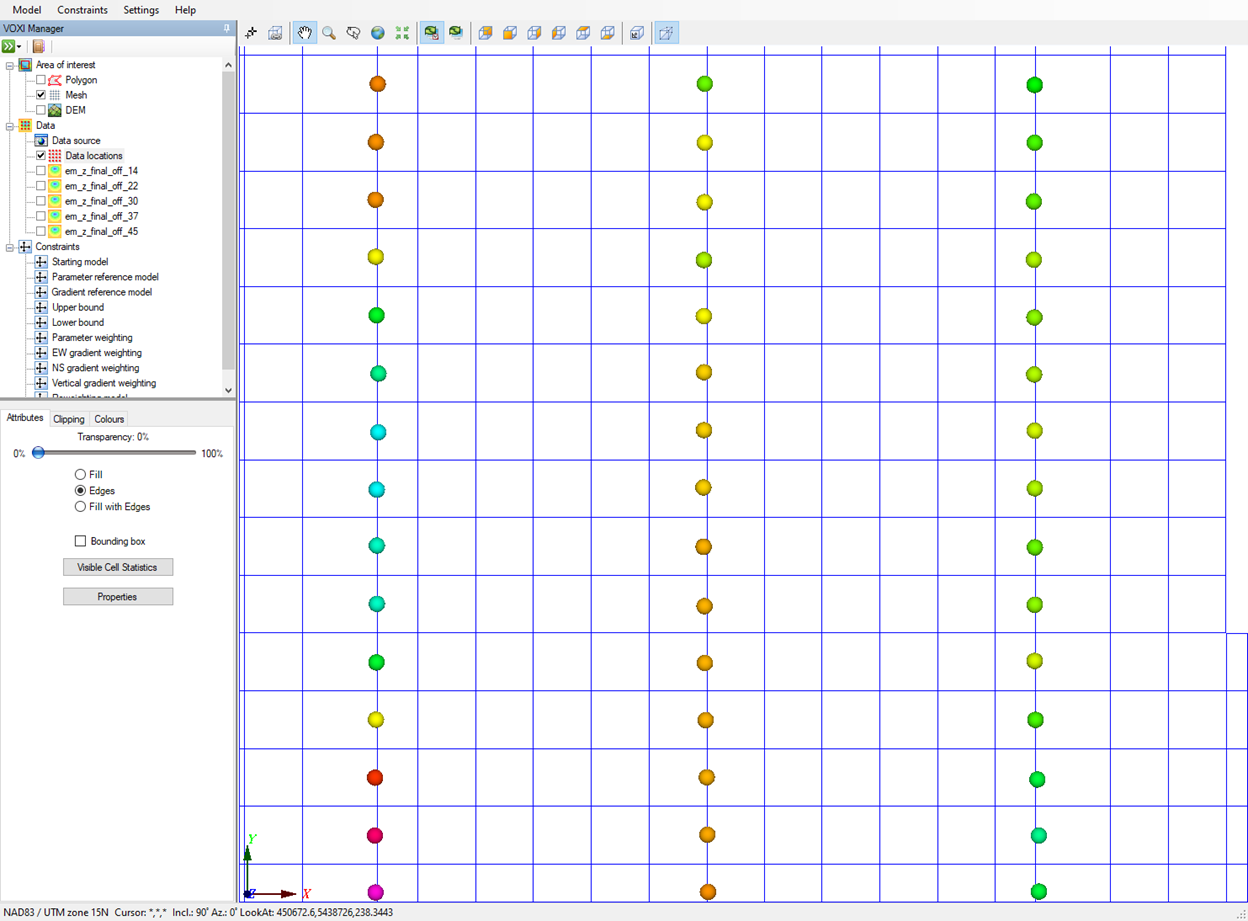Add/Modify Data EM (1/3) - Data Source
This tool is used to add (Data > Add Data option) or modify (Data > Data Source > Modify option) the input data used for modelling conductivity in VOXI.
Data Source dialog options
|
Database file |
Provide the database containing the observed data. This database should have a defined projection and assigned X,Y,Z channels. |
|
Active line |
All the selected (check marked) lines in the provided database will be available in the dropdown list. Initially, the first entry in the list will be picked by default. Select the database line you wish to model. See Application Notes below for more details on how you can easily view and modify your line selection in VOXI Manager. |
|
Channels |
|
|
X Y |
If the coordinate channels are already defined, they will be displayed by default. You can select an alternate pair of x and y channels as long as they have a projected coordinate system defined. |
|
Elevation definition |
The elevation can be provided in two ways. Sensor elevation: the vertical position provided is the elevation of the sensor. It should be on the same coordinate system as the projection datum. Terrain clearance: the vertical position provided is the terrain clearance. This is usually the radar altimeter. |
|
Sensor elevation |
The channel containing the elevation of the sensor. |
|
Above terrain |
The channel containing the terrain clearance of the sensor. |
|
|
|
|
Optimize data sampling |
If relative to the size of the voxel model element, the data is too highly sampled, sending all the observed data to the inversion adds no value but slows down the process. You can decimate the data with little to no loss of precision and thus speed up the process. By default, the data will be decimated to yield roughly one sample per surface voxel element. |
|
Samples per cell |
The number of samples per horizontal cell is customizable. Prior to modelling, all observations and their positions within the same horizontal cell are averaged to yield the required number of samples per cell. |
|
[Next] |
Once you have specified the data, click Next to proceed to the Measurements dialog. Use the Measurements dialog to define the data type and measurement fields in your database. |
Application Notes

Figure 1: Airborne TDEM example with 10 samples per cell

Figure 2: Airborne TDEM example with one sample per cell
It is not advisable to have too many samples per cell, as it increases the computation time without a noticeable gain in the outcome.
2.5D TDEM Line Selection
You can view and change your current line selection in VOXI Manager, where you can easily interact with your VOXI project data. In the Data node:
- Hover the cursor over Data locations and a tooltip will display the currently selected line.
- Right click Data locations, then click on the Select Active Line menu to open the Select Active Line tool and choose a different line for inversion.
- The change will be reflected in the Data locations' tooltip and in the Data Source dialog next time it will be opened: the Active line field will default to the new line selection.
If the line selection in the source database has changed, you will need to run the Modify option first in order to refresh the list of available lines for selection.
Access Seequent Online Learning and select the VOXI guided paths to learn more about effective workflows and key concepts.
Got a question? Visit the Seequent forums or Seequent support
© 2023 Seequent, The Bentley Subsurface Company
Privacy | Terms of Use
